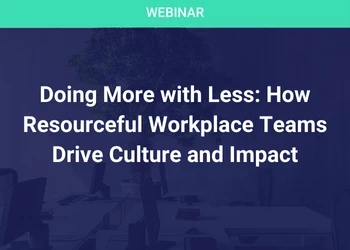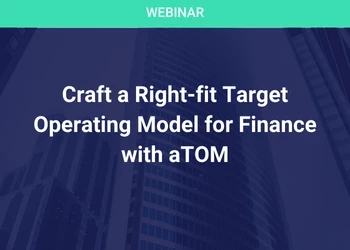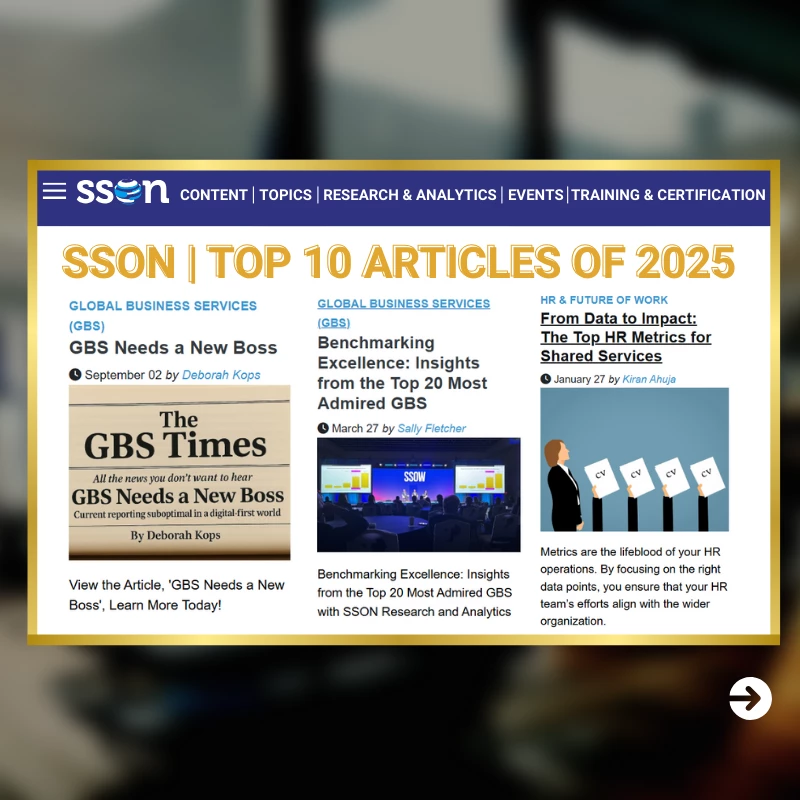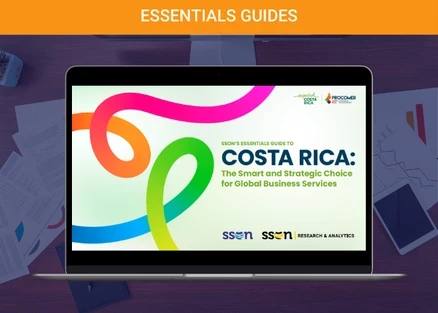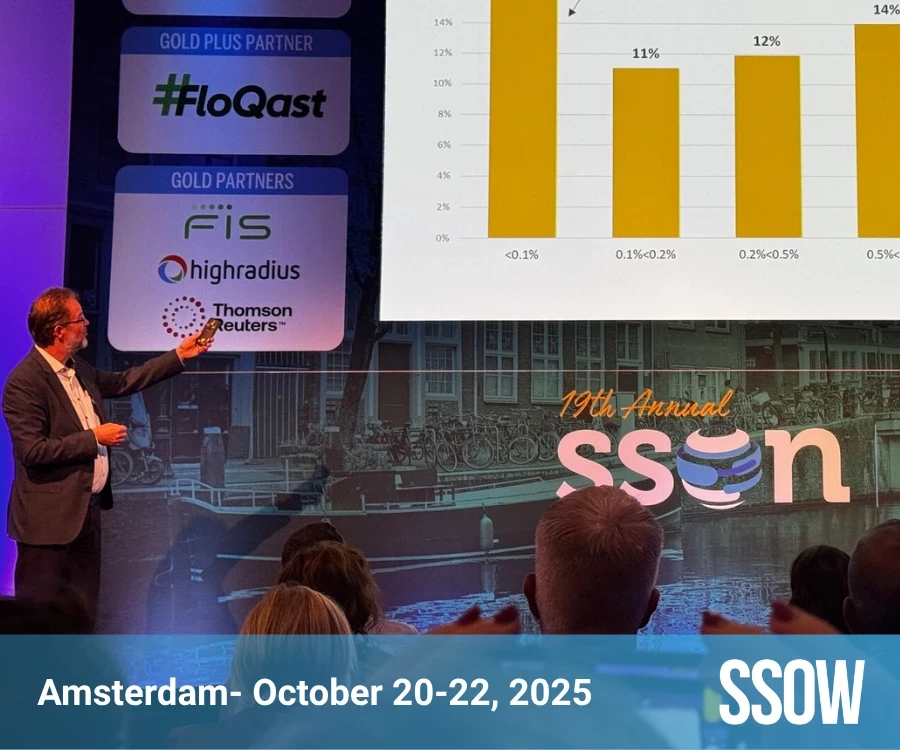
It is no question that you as a GBS professional would like to, if not now but one day, scale your business. However, I am sure that one question that always arises when the topic of “scaling” comes to mind is, “how does one increase the delivery in value while simultaneously reducing costs?”. If this sounds familiar, you are not alone.
In fact, I have been there numerous times and lucky for you, I have both failed and succeeded. This means that I know ways that can lead to failure, and I know ways that can lead to success. And my goal is to help you succeed without failing. In the following, I am going to share with you 5 tangible steps for each of these concepts (decreasing costs & increasing value) that will help you to not only increase the value of your business, but also reduce costs and create the scaled business of your dreams.
Step 1: Separate the Two Ideas
The first step to efficiently upscaling your GBS is to make the concepts of “reducing costs” and “delivering value” independent. While most GBS professionals know that these two ideas are essential to scale efficiently, many GBS professionals will get overwhelmed when trying to accomplish both at the same time within the same tasks. Instead of trying to have your team juggle the different tasks, separate the two ideas.
Reducing costs:
Focus on improving the cost per transaction of work that you currently own or are taking on.
Increasing value:
When it comes to increasing value, improve the quality, profitability, experience, effort, etc. of the service.
Step 2: Drive efficiency and show per transaction and overall cost
It is very common that in GBS, workload increases. It will be no surprise that over the next weeks, months, or years, your task load will increase which, in turn, can cause an increase in overall costs. Now, as you probably know as a GBS professional, when the workload increases, efficiency must also increase. BUT- this is where most people get stuck. Most clients do not pay attention to the volume, they simply look at the overall bill. When they see the total cost go up, they assume you are less efficient, however, they forgot about the increased workload you are now doing for them. It is imperative to point out the reduction in cost per transaction, which signifies the efficiency your team created, and to show them the increased number of transactions leading to an overall increase in their bill.
Cost reduction:
To effectively drive efficiency, we know that it is essential to understand your current production of per transaction cost. Now, to drive efficiency further when it comes specifically to cost reduction, you must understand the current environment of your industry. Here are four questions to think about when it comes to current environment:
- What are the costs per outcome and costs for the total process?
- In an end-to-end sense, what is the total scope of work in process?
- What will the cost be depending on the amount of people included in the process?
- Finally, when it comes to industry standards, what is the projected cost for all these needs to be met at the specific industry standard?
After you have answered each of these questions specific to your industry, it will give you a better understanding of numbers that you can target your production costs around.
Increased Value:
Create Alignment on Value
The goal of driving efficiency of your business while accounting for per transaction and overall cost, is also to increase the overall value of your business. It is essential that you understand what your clients see as value. Increased profit, customer retention, customer satisfaction? There are endless measures of value, and you need to be sure the value you deliver is aligned with what the business also sees as valuable. Throughout the stages of transformation and the increase in sales and product, you will begin to be able to use consumers and employees as a focus group. Pay close attention to what makes consumers and workers satisfied, dissatisfied, or hesitant. Take note of what value is currently established and what value is missing according to the consumers and workers. Then, find out how to measure this value. Come up with a plan that will enable you to create a roadmap of where value is missing and what the new targets of value are. Use these findings to present your clients new perspectives on value for their business, however, always ensure alignment before execution. Finally, pay attention to what the budget may look like for these new targets of value.
Step 3: Deliver Value Beyond the Task
Once you have separated the ideas of reducing costs and increasing value and have answered all the questions regarding current environment, scope, costs, and a calibration on value, congratulations! You are now ready to scale your business in the eyes of most professionals. However, there is one thing you must note. You want to stand out amongst most professionals. THIS means that we must go beyond understanding the numbers of costs and outline of future value within the specific environment. Scaling your business is one thing but scaling your business in a way that stands out is another.
For example, what is it that your GBS offers to consumers now? In what ways can you provide even more value than the initial task that other companies in your field may not?
Reducing Costs:
To stand out, you must think of creative ways to add value to the initial goal that you have in mind. How do you drive additional value in taking a return? Here are some questions to think about when setting goals to help you stand out among competition and deliver value that goes beyond the initial task.
- Do you have SMART goals?
- Have you created an end-to-end plan?
- Look into professionals that have done it before, what has/has not worked?
- What has changed in your industry that will be applicable to your transformation
- Do you have all the essential resources to stand out and meet these goals? If not, how can you get them?
- Is the timeline you set for yourself honest and tangible?
Increased Value:
At this stage, the most important thing to remember when increasing value in a way that stands out among competitors is to always take note of value measurements. Where are the areas in which you can/should improve? Where can you add value in a way that your competitors do not already?
As said above, it is easy to think of the next steps when it comes to scaling your GBS and taking it to the next level, but it is true creativity and effective uniqueness that will drive your business to the top of the game.
Step 4. Innovation, Transformation, and Almost Execution
Once you have developed the roadmap of costs and goals to lead your company in a unique way to the top of your industry, it is now time to plan out your end-to-end execution. Within the goals you had set for yourself to ensure value is delivered beyond the task at hand, you should have a solid foundation of a process that will keep your business unique yet on a direct path to transformation.
Cost Reduction:
When it comes to execution, it is essential to have a plan for bandwidth. An obstacle that many professionals face when undergoing a transformation is assuming associates will organize themselves in a way where some of them are no longer needed or that they will spend newly created time on more strategic and valuable tasks. The truth is people are creatures of habit and are likely to use any new time, to do the same old tasks they have been doing, without a specific plan in place.
Having a plan for the bandwidth, such as taking on a new workstream or removing headcount, will allow you to free up full FTEs and realize cost savings, or redirect resources to new profit streams.
Increase Value:
Set goals w/cost and signoff:
At this stage in your transformation, you have likely seen some external and internal changes. Along with this comes your stakeholders noticing these changes as well. This is when it becomes increasingly important to get written agreements with your stakeholders. Having agreements with stakeholders allows for everyone to be on the same page in regard to costs and expectations.
With this written agreement comes the importance of having a roadmap of current and future measurements and improvements. What is going well now? What could be going better? What will the end-to-end cost of these improvements be? To ensure an increase in value, it is essential to take note in what is working, what may not be working, and what it will take to ensure that it will be working soon.
Step 5: Execute... Yes. Finally
Cost Reduction
When it comes to executing this plan that involves over all costs, a scope of the overall workload, an overview of each person involved, and a true idea of how to stand out among competition yet also meeting industry standards, it is essential to look at the process end to end. What will the very first step of execution look like? What are the outcomes vs activity when it comes to each step of execution? How can you automate this transformation process?
Increased Value Process:
A common misconception that professionals have in the execution stage of transformation is that the entire reason for execution is to increase value. What will differentiate you from competitors is that you are not only executing to increase value, but you will be increasing value even during the execution process. Instead of looking at this step with only the intention to have an increase value by the end of the process, look for ways to increase value even further during the execution process.
For example, have a scoreboard to keep track of where you are value wise and where you could/want to be. Additionally, having regular interval updates will help you and your team to pause and look at the past processes and what you can be doing better. It may even open spots as to where you can triple the before predicted value. Furthermore, stay open-minded. As it is in the cost reduction process, communication is key. Make sure all teams stay up to date with each other to ensure that you are all on the same level.
Finally, think like a start-up and deliver value beyond the initial task.
The execution stage may seem intimidating. You have spent weeks, months, maybe even years planning out the intricate ways to be sure that this transformation will take your organization to the next level. However, it is important to remember that volume & complexity means opportunity.
Volume and complexity = opportunity
Conclusion
Congratulations! You have effectively executed your plan to transform your business in a way that will deliver value. However, now you face another issue- what does the future look like for your company?
The first step would be to understand the new norm. Your business has been through a lot of transitions recently. With this comes many more questions. Here are some questions to think about when the new norm begins to unravel itself after you have executed your transition.
Cost Reduction:
- What is the cost per outcome at?
- What is the total costs for process so far?
- What is the scope of work looking like compared to the initial scope of work? More, or less?
- How are you matching up to industry standards?
- What has changed in good ways and bad ways?
Increased Value:
- Costs due to value vs other
- Industry standards w/value targets
- Other improvements
While planning prior to execution is an essential step of being sure that you will deliver value while reducing costs, you won’t know the exact numbers until after execution. This is why it is so important to keep tabs on each of these numbers during the transitioning stage. As you notice each of these numbers changing, you will be able to see where your business is reducing in costs, and where it may be increasing in costs. The more familiar you are with where your business is, the more likely you will be to stop an accident before it happens, or right when it starts.
Finally, it is essential to remember your story. Keep track of your accomplishments and challenges, compare and contrast what worked this time and what didn’t work before, have concrete data that describes your story, and lastly, describe additional benefit outcomes due to your strategy. Keeping track of all the ups and downs of your business transformation process will help you to increase efficiency and reduce costs moving forwards by bypassing potential obstacles that you faced previously.



